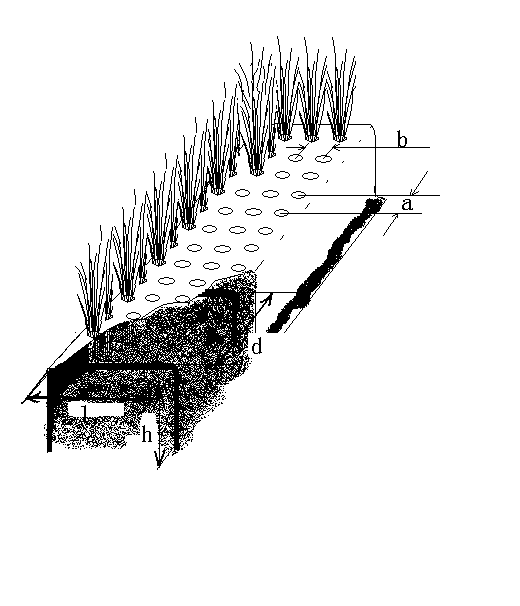Cultivation method for hotbed chives
A cultivation method and technology of Chinese chives, applied in botany equipment and methods, horticulture, plant protection covers, etc., can solve the problems of difficult prevention and treatment of chives and maggots, small unit planting area, and increased labor, so as to reduce labor intensity and Lower cost, save the heavy labor of cultivating soil, and improve the effect of yield and quality
- Summary
- Abstract
- Description
- Claims
- Application Information
AI Technical Summary
Problems solved by technology
Method used
Image
Examples
Embodiment 1
[0029] In late March 2011, a plot with high terrain and good irrigation and drainage conditions was selected for cultivation in Xiasha Street, Jianggan District, Hangzhou City.
[0030] 1. Field planting
[0031] Apply 1000 kg of decomposed organic fertilizer per mu, and 15 kg of ternary compound fertilizer as base fertilizer, and deep plow the plot. Combining with fertilization to make a furrow, the height of the furrow is 12-15cm, the width of the furrow is 100-110cm, and the width of the ditch is 20-25cm. Cut off a section of leaves to reduce leaf surface evaporation, plant 20-25 plants per hole with a row spacing of 25cm×25cm, and plant 4 rows in each border. In order to strictly unify the row spacing of plants and facilitate the standardized operation of subsequent cultivation of Chinese chives, a custom-made black and white film with holes (8cm in diameter, 25cm×25cm×4 in spacing, and 0.12mm in thickness) can be covered on the furrow, and planted in each hole. Put the ...
PUM
 Login to View More
Login to View More Abstract
Description
Claims
Application Information
 Login to View More
Login to View More - R&D
- Intellectual Property
- Life Sciences
- Materials
- Tech Scout
- Unparalleled Data Quality
- Higher Quality Content
- 60% Fewer Hallucinations
Browse by: Latest US Patents, China's latest patents, Technical Efficacy Thesaurus, Application Domain, Technology Topic, Popular Technical Reports.
© 2025 PatSnap. All rights reserved.Legal|Privacy policy|Modern Slavery Act Transparency Statement|Sitemap|About US| Contact US: help@patsnap.com

